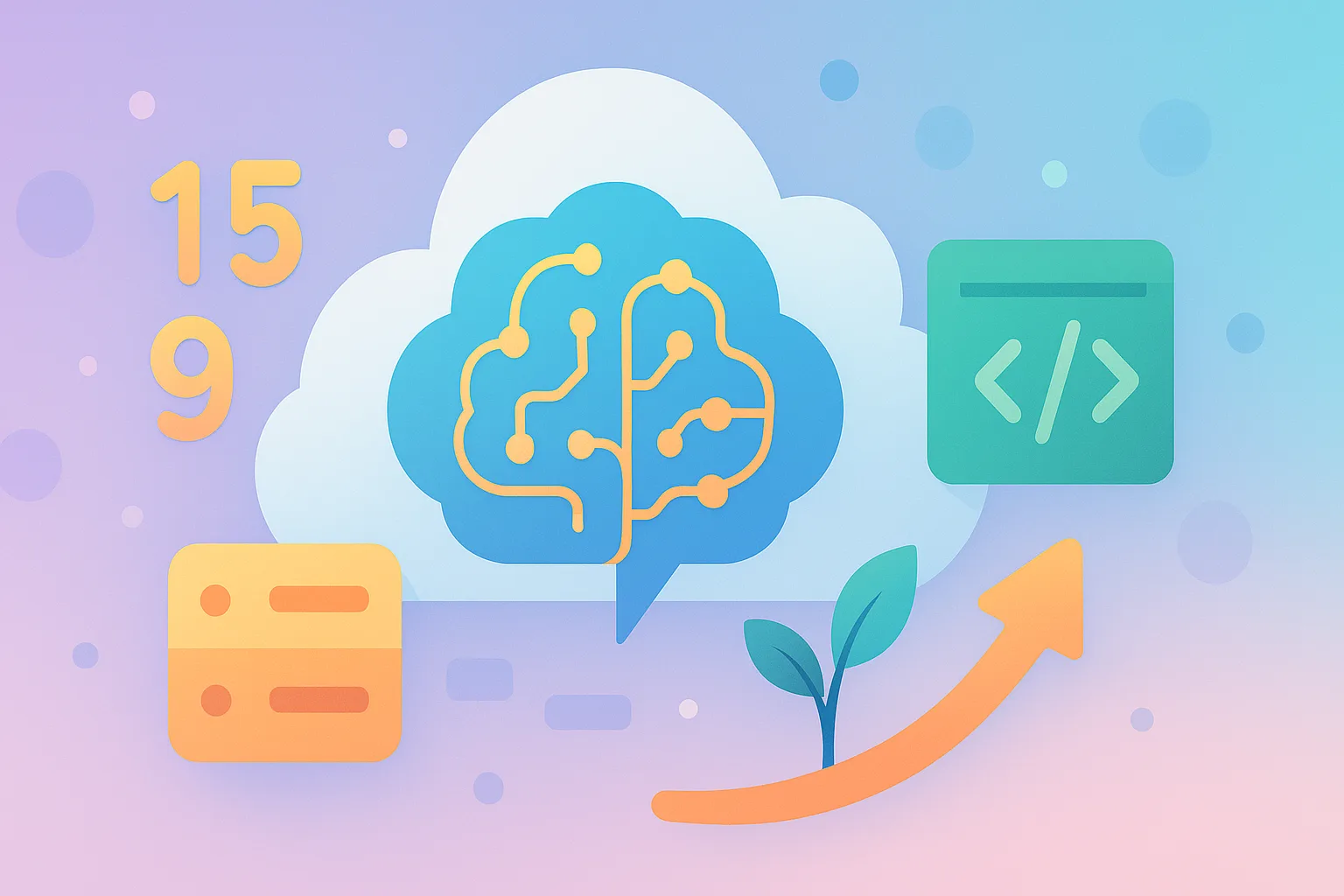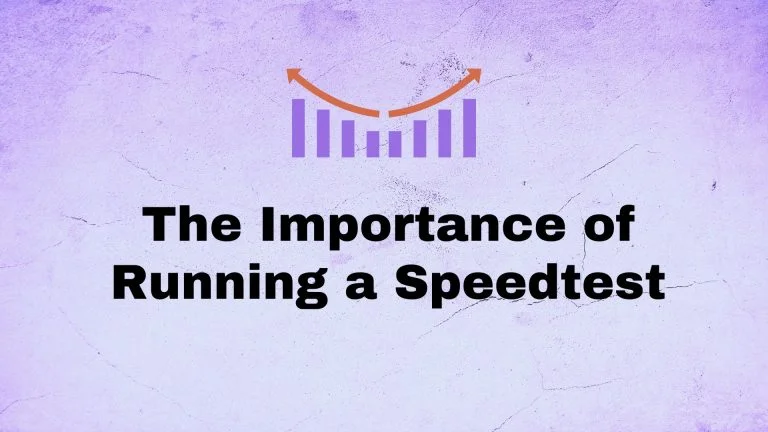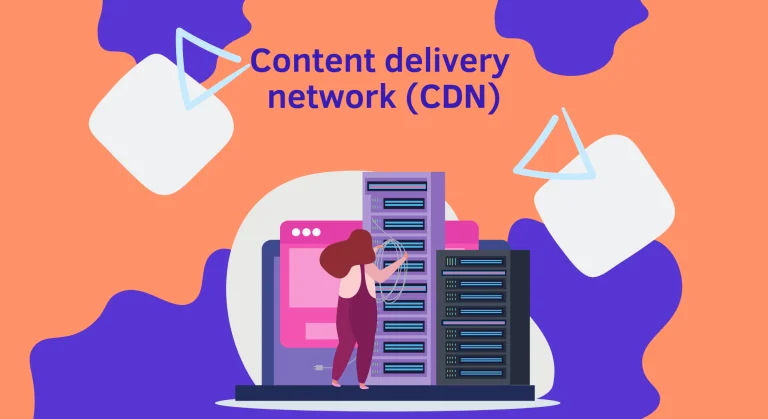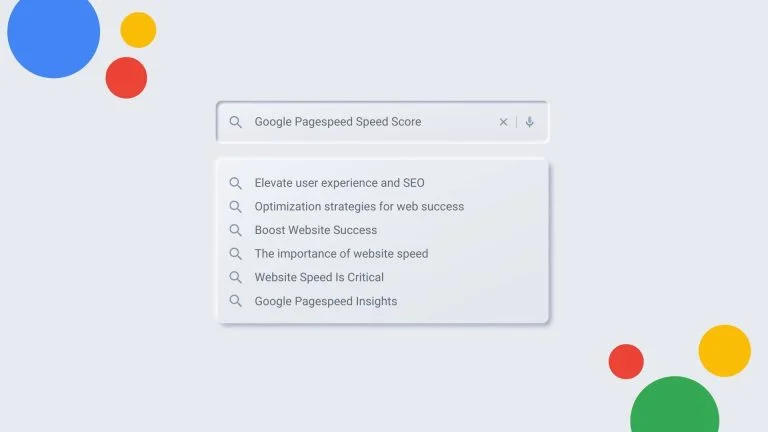These days, speed isn’t just a nice bonus—it’s a must. People expect websites to load instantly and run smoothly, no matter what device they’re using. A one-second delay can cost you traffic, reduce engagement, and hurt your bottom line. That’s why machine learning site speed optimization has gone from “nice to have” to essential.
So, what exactly is it? In plain terms, machine learning is used to automatically monitor, analyze, and boost your site’s performance in real time. Instead of waiting for things to go wrong, machine learning helps you stay ahead—adjusting to traffic shifts, spotting slowdowns before they happen, and making behind-the-scenes improvements without you lifting a finger.
Still, a lot of businesses are stuck using outdated methods—like reactive monitoring and manual performance fixes that only kick in after users have already felt the slowdown. Sure, those tools might offer a quick patch, but they can’t keep up with today’s always-on, high-expectation web users.
That’s where machine learning changes the game. It doesn’t just react—it predicts. It can flag unusual activity, adjust performance settings on the fly, and make smart decisions to keep things fast and efficient. The result? Quicker load times, better resource usage, and a smoother experience for every visitor.
At WPRapidly, we’ve built ML-powered optimization right into our platform. That means your site can scale when it needs to, speed up under pressure, and stay stable even when traffic spikes. You won’t see the changes happening, but your users will feel them.
In this article, we’ll break down how machine learning site speed optimization works, why it’s a game-changer for your website, and how to make it part of your performance strategy.
What’s Real-Time Performance Optimization All About?
It’s all about keeping your website or app running at its best as it’s happening—not hours or days later. Real-time performance optimization means monitoring, analyzing, and fine-tuning your system on the fly. Unlike older methods that wait for something to go wrong before stepping in, this approach uses live data and smart automation to keep things running smoothly around the clock.
The Three Core Pieces That Make It Work
Let’s break it down into what makes real-time optimization tick:
🔁 Latency: This is the delay between a user’s action and your system’s response. Real-time tools work to cut that lag by spotting slowdowns the moment they start and fixing them fast.
📶 Uptime: Simply put, uptime is keeping your site or app online and available. Real-time monitoring can catch outages early and fix them before they become a big deal.
🧠 Resource Management: This is all about using things like CPU, memory, and bandwidth efficiently—especially when traffic surges. Real-time systems adjust on the go to avoid slowdowns or crashes.
When these three are dialed in, you don’t just get speed—you get stability and scalability, too.
Why It Matters: UX, SEO, & Your Bottom Line
Here’s the thing: how fast and smooth your digital experience feels has a direct impact on how users interact, how Google ranks you, and how much money you make. Just one extra second of load time can drop conversions by 7% and cost you up to 11% of your page views. And now that Google focuses on Core Web Vitals—real-world performance metrics—real-time optimization is no longer optional if you want to stay competitive.
Static vs. Dynamic Optimization: What’s the Difference?
Traditional optimization (aka static) usually follows set rules or fixed schedules. That might mean clearing your cache once a day or manually scaling servers when you expect traffic. It’s not bad, but it’s not fast enough when things change quickly.
Dynamic optimization, on the other hand, reacts in real time. It uses automation and live data to make instant decisions. And with machine learning in the mix, it goes a step further—spotting patterns, predicting issues before they happen, and taking action without you having to lift a finger.
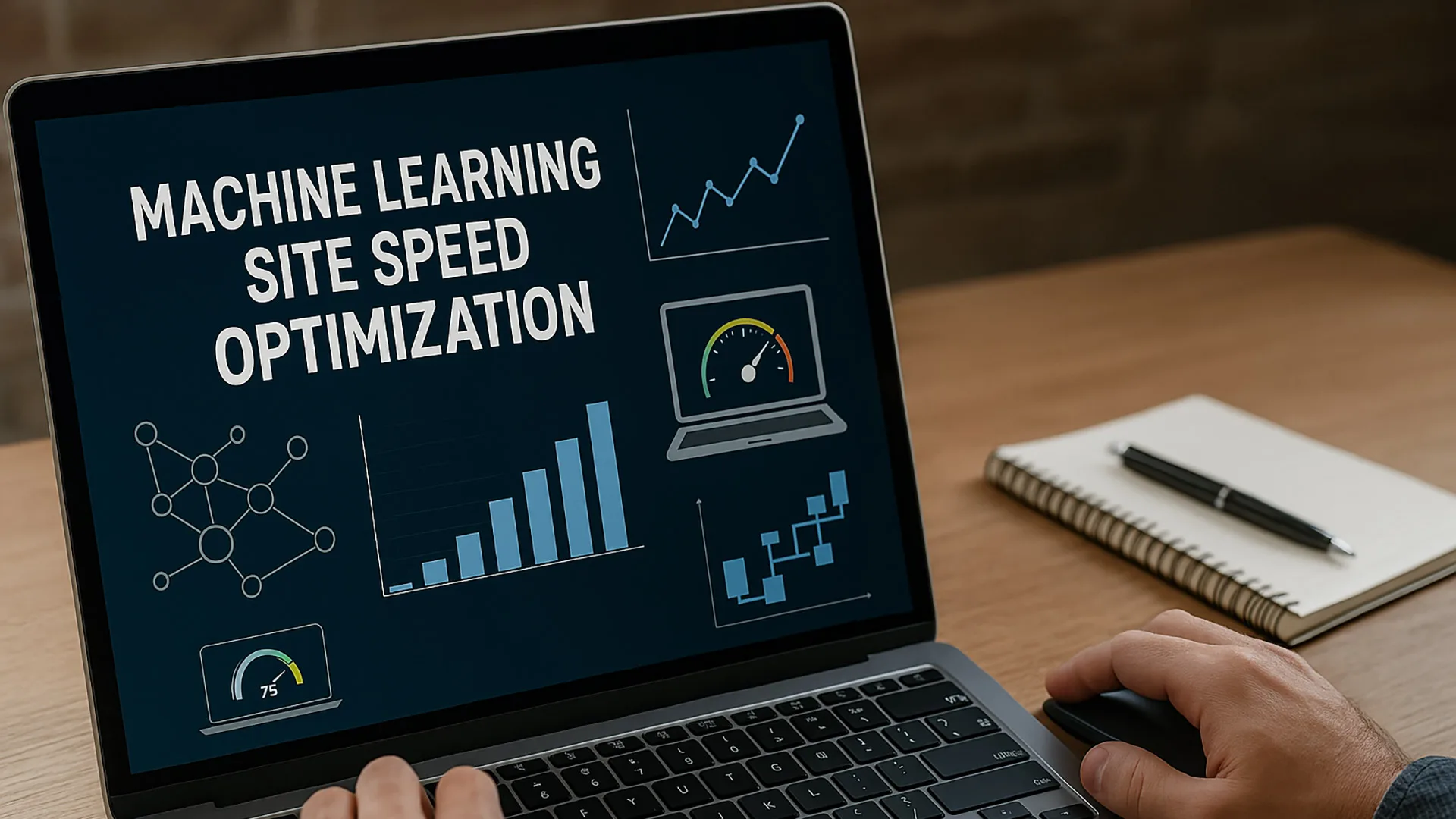
How Machine Learning Supercharges Performance Optimization
When speed, scalability, and adaptability really matter (which is most of the time these days), machine learning steps up in a big way. It brings in a powerful layer of intelligence—letting systems watch, analyze, and respond to performance data on their own. And it does it faster and more accurately than humans ever could.
Smarter Monitoring, Not Just More Metrics
Sure, traditional tools keep an eye on things like CPU usage, memory load, and how fast your site responds. But ML goes deeper. It looks for patterns and weird behavior that static rules might completely miss. Say there’s a slow but steady spike in error rates during high traffic—ML can catch that early and trigger fixes before users start getting frustrated.
Learning from the Past. Adapting in the Present.
ML models are trained using both old and new data. They look at historical trends to spot recurring issues, and they also tap into real-time metrics to stay responsive. That mix helps them make better choices on the fly—combining big-picture strategy with live, moment-by-moment adjustments.
Predicting Problems Before They Happen
Most traditional systems wait until something breaks before reacting. Machine learning flips that on its head. It powers predictive analytics—so the system can see problems coming, like a server about to get slammed or a query that’s about to drag down performance—and act before things go south.
Real-Time Decisions, Zero Lag
Modern ML models can make lightning-fast decisions right where the data is—on the server or even at the edge. That means they can shift resources, reroute traffic, or adjust caching strategies in real time, with no human needed to step in.
By weaving ML into the fabric of performance optimization, you’re not just reacting anymore—you’re staying ahead of the curve. It’s like having a system that learns, adapts, and keeps getting better, no matter what kind of chaos the internet throws your way.
Key Machine Learning Techniques That Power Real-Time Optimization
Machine learning isn’t a one-size-fits-all kind of thing. Different types of algorithms serve different purposes—especially when you’re optimizing system performance in real time. Whether it’s predicting traffic surges or fine-tuning servers on the fly, here are the main ML techniques that make it all work behind the scenes.
1. Supervised Learning: Predicting Traffic Before It Hits
Supervised learning is one of the most common ML approaches—and for good reason. It’s great for forecasting traffic on your website or app. How? It uses historical, labeled data like past visitor counts, time of day, day of the week, and even conversion events to predict what’s coming next.
With that info, your system can prep in advance—scaling resources, rebalancing loads, or warming up caches before the traffic spike hits. Algorithms like regression models, decision trees, and gradient boosting machines shine here because they’re both accurate and easy to interpret.
2. Unsupervised Learning: Catching Problems You Didn’t See Coming
Sometimes, you don’t have labeled data—or the system starts acting in unexpected ways. That’s where unsupervised learning kicks in. These models are great at spotting weird patterns or outliers in your performance data—like unusual CPU spikes or slower-than-usual response times.
Techniques like K-means clustering and autoencoders help flag issues that don’t follow normal trends. This means the system can detect—and often fix—problems in real time, even if they’ve never happened before.
3. Reinforcement Learning: Smarter Infrastructure On Its Own
Reinforcement learning (RL) is a bit like teaching the system through trial and error. The algorithm tries different things—like tweaking server setups or adjusting cache settings—and learns from the results. Did it boost speed? Did it save resources? Over time, the model figures out what works best under different conditions.
This makes RL perfect for environments where things change fast, like auto-scaling cloud systems. It adapts on the go, optimizing uptime and speed while keeping costs in check—all without needing a human in the loop.
4. Time Series Forecasting: Spotting Trends Before They Become Problems
Performance data follows a timeline, so time series models are super important. Classic models like ARIMA, along with more advanced ones like LSTM (Long Short-Term Memory) networks, help track trends over time and make future-focused predictions.
These models can:
Predict upcoming resource usage
Forecast slowdowns based on user behavior patterns
Identify seasonal or campaign-related performance shifts
LSTMs are especially good at seeing the big picture—spotting patterns that unfold over hours or even days.
Put all these techniques together, and you’ve got a performance optimization system that’s smart, responsive, and always learning. It’s not just about speed anymore—it’s about adaptability, efficiency, and the ability to get better over time.
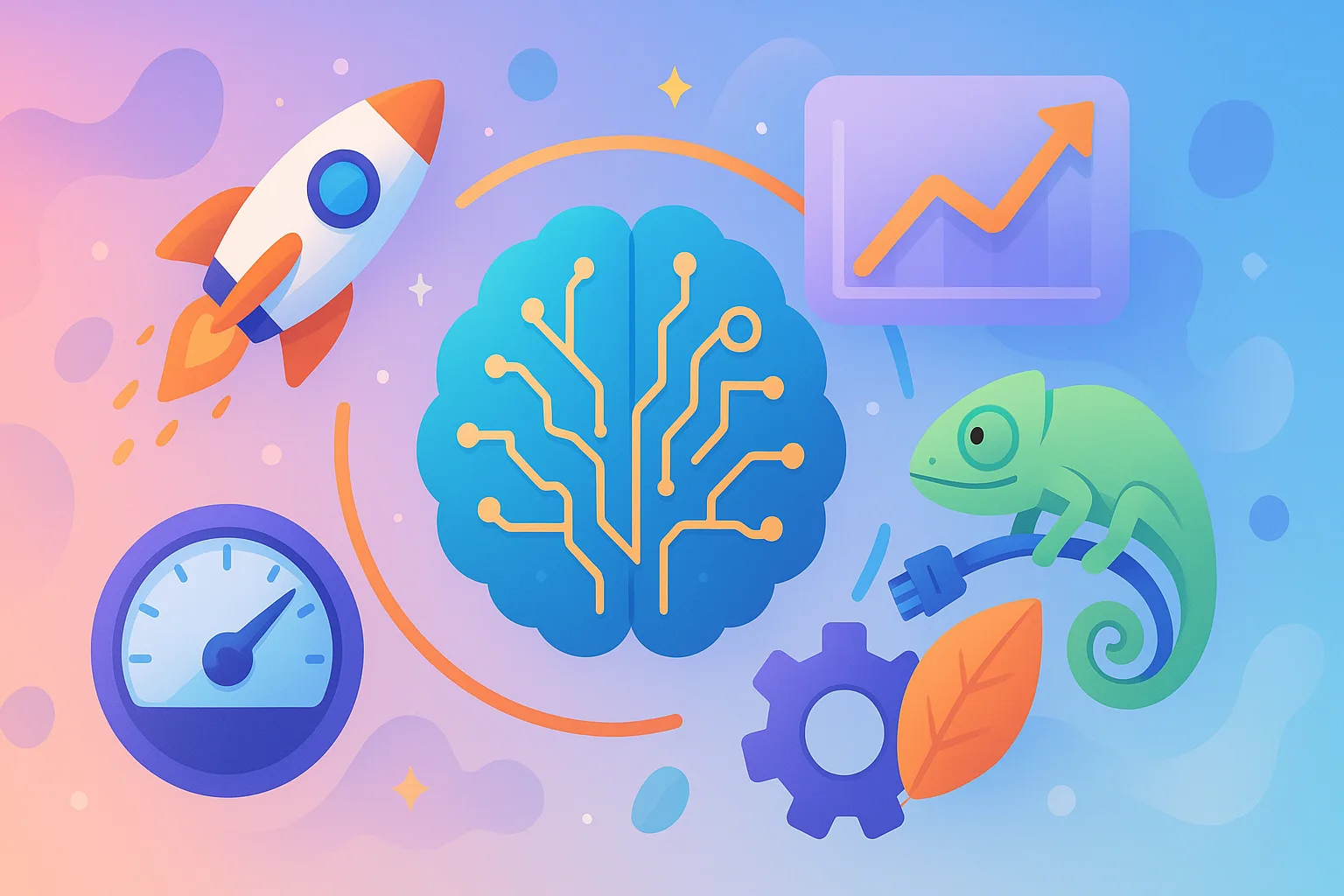
Where Machine Learning Shines in Real-Time Optimization
Machine learning doesn’t just react—it anticipates. It gives your systems the smarts to make quick, informed decisions on the fly. Let’s dive into some real-world use cases where ML is making a serious impact on performance.
🚦 Predicting Traffic Spikes Before They Hit
Imagine knowing a traffic surge is coming before it happens. That’s what ML can do. By analyzing past trends, seasonal behavior, and real-time user activity, it forecasts high-demand moments—like product drops, ad campaigns, or viral content. This lets your system prep in advance, scaling resources ahead of time so your site stays smooth under pressure.
☁️ Smarter Auto-Scaling in the Cloud
Old-school auto-scaling kicks in only after usage hits a limit—like CPU going over 80%. But by then, it might already be too late. ML flips the script by predicting upcoming demand and adjusting server capacity before you hit those limits. That keeps your site stable and saves money by avoiding unnecessary overprovisioning.
🔁 Next-Level Load Balancing
ML supercharges load balancing by constantly checking on server health, traffic patterns, and even where your users are coming from. It automatically routes requests to the fastest, least-busy server, so users get quick responses—even during rush hours.
⚡ Smarter Caching Done Dynamically
Instead of using fixed cache rules, ML helps figure out what content people are using and when. It adapts caching strategies in real time, extending cache life for popular content and updating less-used items when needed. This keeps things fast while easing the load on your servers.
🌐 Optimizing CDN and Content Delivery in Real Time
Content Delivery Networks (CDNs) get a boost with ML too. By analyzing user location and current network conditions, ML chooses the best edge server to deliver content. It can also pre-load assets it knows users are likely to need, cutting down on load times around the globe.
🗃️ Tuning Up Slow Database Queries
Got laggy queries dragging your app down? ML can spot them before they cause trouble. It monitors query performance, highlights inefficient ones, and even suggests or applies fixes—like smarter indexing or rewrites—to keep things running fast on the backend.
Each of these examples shows how ML doesn’t just support performance—it drives it. Fast, smart, and always one step ahead of user expectations.
How WPRapidly Uses Machine Learning to Keep Your Site Fast, Smart, and Scalable
At WPRapidly, we don’t treat performance optimization as an afterthought—it’s baked into everything we do. That’s why we built our own machine learning-powered performance engine from the ground up. Its job? To constantly monitor, predict, and fine-tune performance across your entire tech stack—automatically.
It All Starts with Smart Data Collection
Real-time performance optimization begins with knowing what’s going on under the hood. Our system keeps an eye on key metrics like server load, memory usage, traffic spikes, and database response times. That data flows into machine learning models trained to recognize patterns, predict what’s coming next, and take action—often before you even notice a problem.
And the more data the system processes—both historical and real-time—the smarter and more personalized it becomes for your specific website or app environment.
Here’s What Our ML Engine Can Do:
🔔 Predictive Alerts
Our system forecasts issues like rising memory usage or incoming traffic surges before they happen. That gives us time to act early so you can avoid slowdowns and stay online.
📈 Auto-Scaling That Just Works
Resources automatically adjust to match your traffic. When it’s busy, we scale up. When it’s quiet, we scale down—saving you money without sacrificing speed.
⚡ Adaptive Caching Strategies
No more one-size-fits-all caching rules. Our ML engine figures out which content should be cached, how long to cache it, and which users need it most based on live behavior and traffic trends.
🧠 Smart Database Tuning
We track database queries to spot the ones that are slowing you down. Then, we suggest or apply fixes—like indexing tweaks or query rewrites—to keep things running smoothly.
🔄 Self-Healing Infrastructure
If something crashes or a process fails, our system doesn’t just send a warning—it takes action. It can restart services, shift resources, and keep your site live while it sorts things out.
Built for WordPress — But Ready for Anything
While some optimization tools try to be a jack-of-all-trades, WPRapidly is finely tuned for WordPress performance. It works seamlessly with WooCommerce, multisite setups, and all your favorite plugins. Running something custom? No problem. We adapt our ML models and monitoring tools to match your architecture, giving you the same real-time performance boost.
So whether you’re managing a simple blog or powering a high-traffic enterprise platform, WPRapidly’s machine learning engine helps you stay fast, stable, and ahead of the game—without the stress.

